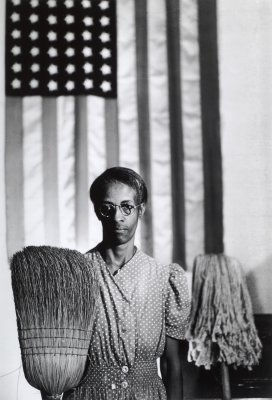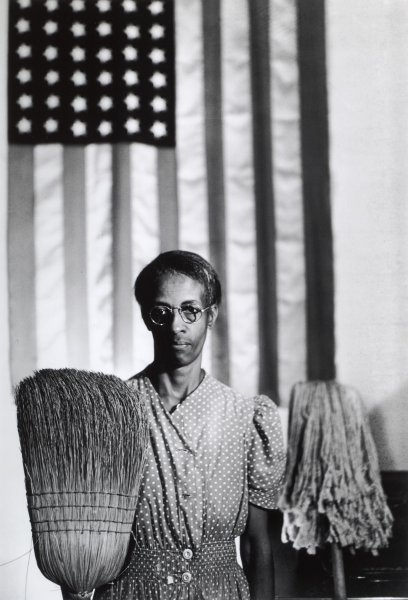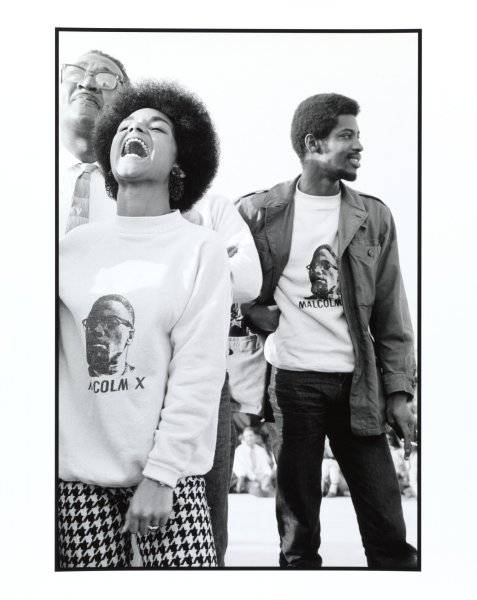Photographer Gordon Parks met Ella Watson, the subject of this photograph, on his first day of work with the photography branch of the Farm Security Administration (FSA), where Watson was a housekeeper. In his portrait of Watson, Parks self-consciously echoed Grant Wood’s famous 1930 painting American Gothic; as he later explained to an interviewer:
I had experienced a kind of bigotry and discrimination [in Washington, D.C.] that I never expected to experience. . . . At first, I asked [Ella Watson] about her life, what it was like, and [it was] so disastrous that I felt that I must photograph this woman in a way that would make me feel or make the public feel about what Washington, D.C., was in 1942. So I put her before the American flag with a broom in one hand and a mop in another. And I said, ‘American Gothic’—that’s how I felt at the moment. I didn’t care what anybody else felt. That’s what I felt about America and Ella Watson’s position inside America.
Parks went on to create some of the twentieth century’s most celebrated images of the impacts of racial inequality on life in the United States and the Civil Rights activists committed to changing these realities, a number of which also recently entered the Albright-Knox’s collection.


